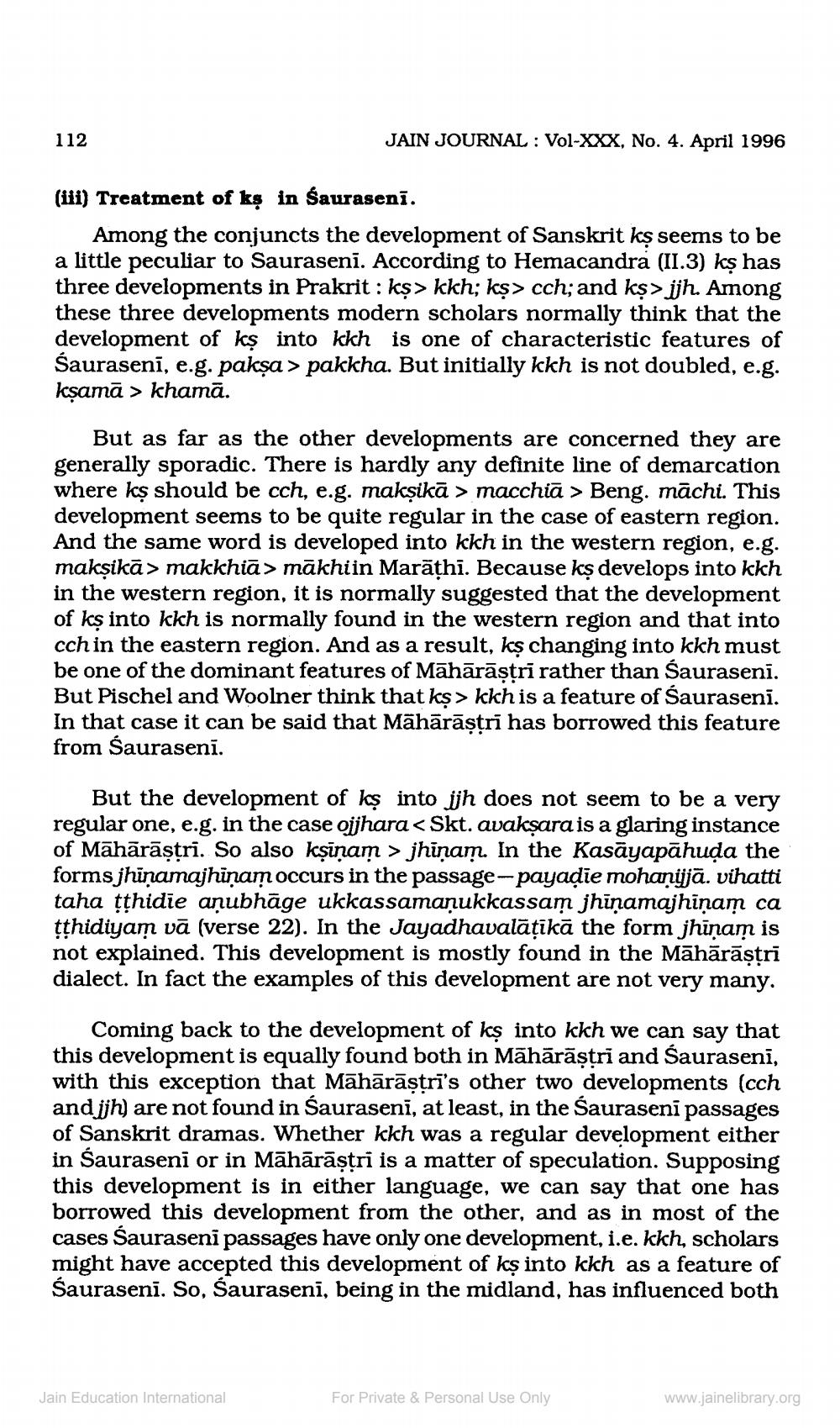________________
112
JAIN JOURNAL: Vol-XXX, No. 4. April 1996
(iii) Treatment of ks in Sauraseni.
Among the conjuncts the development of Sanskrit ks seems to be a little peculiar to Sauraseni. According to Hemacandra (II.3) ks has three developments in Prakrit: ks> kkh; ks> cch; and ks> jjh. Among these three developments modern scholars normally think that the development of ks into kkh is one of characteristic features of Śauraseni, e.g. pakṣa> pakkha. But initially kkh is not doubled, e.g. kṣamā > khamā.
But as far as the other developments are concerned they are generally sporadic. There is hardly any definite line of demarcation where ks should be cch, e.g. makṣikā > macchia > Beng. māchi. This development seems to be quite regular in the case of eastern region. And the same word is developed into kkh in the western region, e.g. makṣikā> makkhiā> mākhiin Marathi. Because kṣ develops into kkh in the western region, it is normally suggested that the development of ks into kkh is normally found in the western region and that into cch in the eastern region. And as a result, ks changing into kkh must be one of the dominant features of Mahārāṣṭrī rather than Sauraseni. But Pischel and Woolner think that kṣ> kkh is a feature of Śauraseni. In that case it can be said that Māhārāṣṭri has borrowed this feature from Śauraseni.
But the development of ks into jjh does not seem to be a very regular one, e.g. in the case ojjhara < Skt. avakṣara is a glaring instance of Māhārāṣṭri. So also kṣiņam > jhiņam. In the Kasayapāhuḍa the forms jhiņamajhiņam occurs in the passage-payaḍie mohanijjā. vihatti taha ṭṭhidie aṇubhāge ukkassamaņukkassam jhiņamajhiņam ca ṭṭhidiyam vā (verse 22). In the Jayadhavalāṭīkā the form jhiņam is not explained. This development is mostly found in the Māhārāṣṭri dialect. In fact the examples of this development are not very many.
Coming back to the development of ks into kkh we can say that this development is equally found both in Mahārāṣṭrī and Sauraseni, with this exception that Māhārāṣṭrī's other two developments (cch and jjh) are not found in Śauraseni, at least, in the Śauraseni passages of Sanskrit dramas. Whether kkh was a regular development either in Śauraseni or in Mahārāṣṭri is a matter of speculation. Supposing this development is in either language, we can say that one has borrowed this development from the other, and as in most of the cases Śauraseni passages have only one development, i.e. kkh, scholars might have accepted this development of ks into kkh as a feature of Śauraseni. So, Śauraseni, being in the midland, has influenced both
Jain Education International
For Private & Personal Use Only
www.jainelibrary.org




